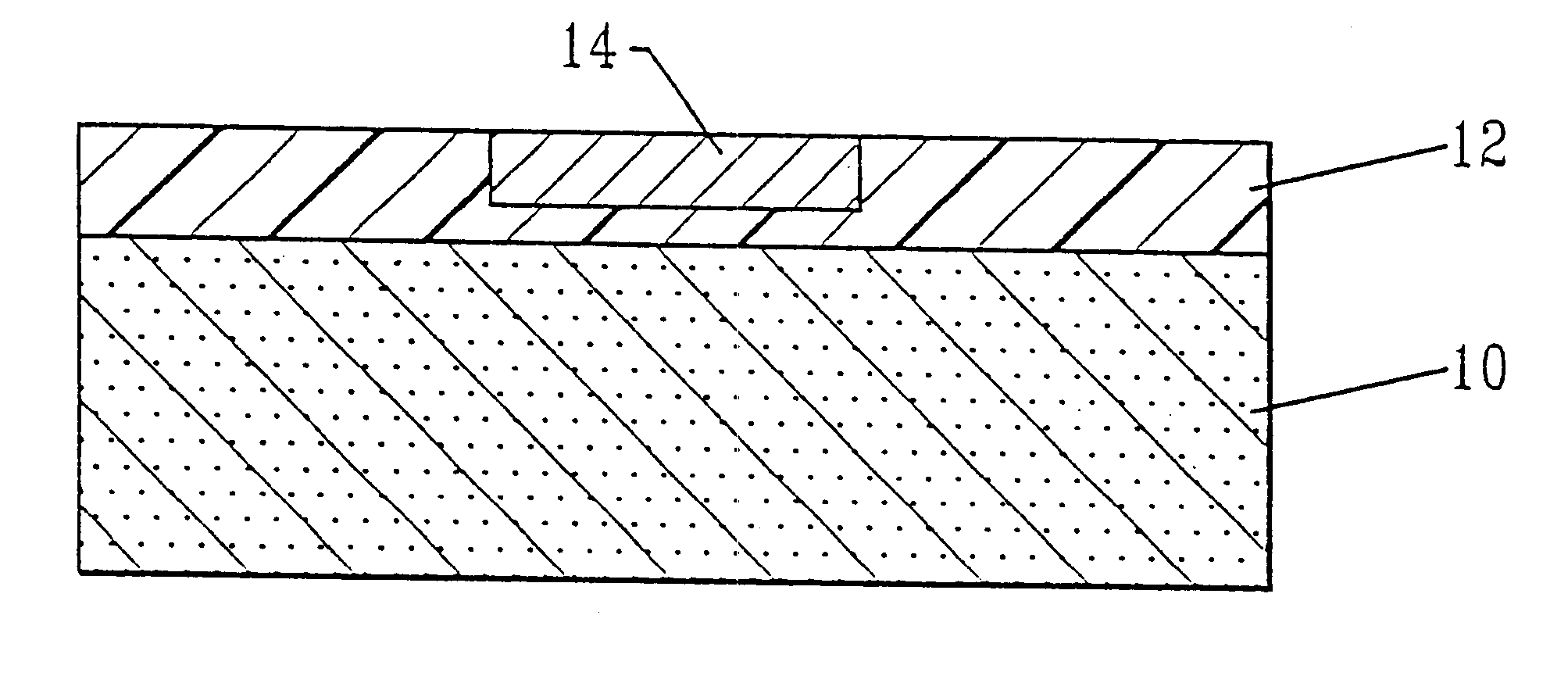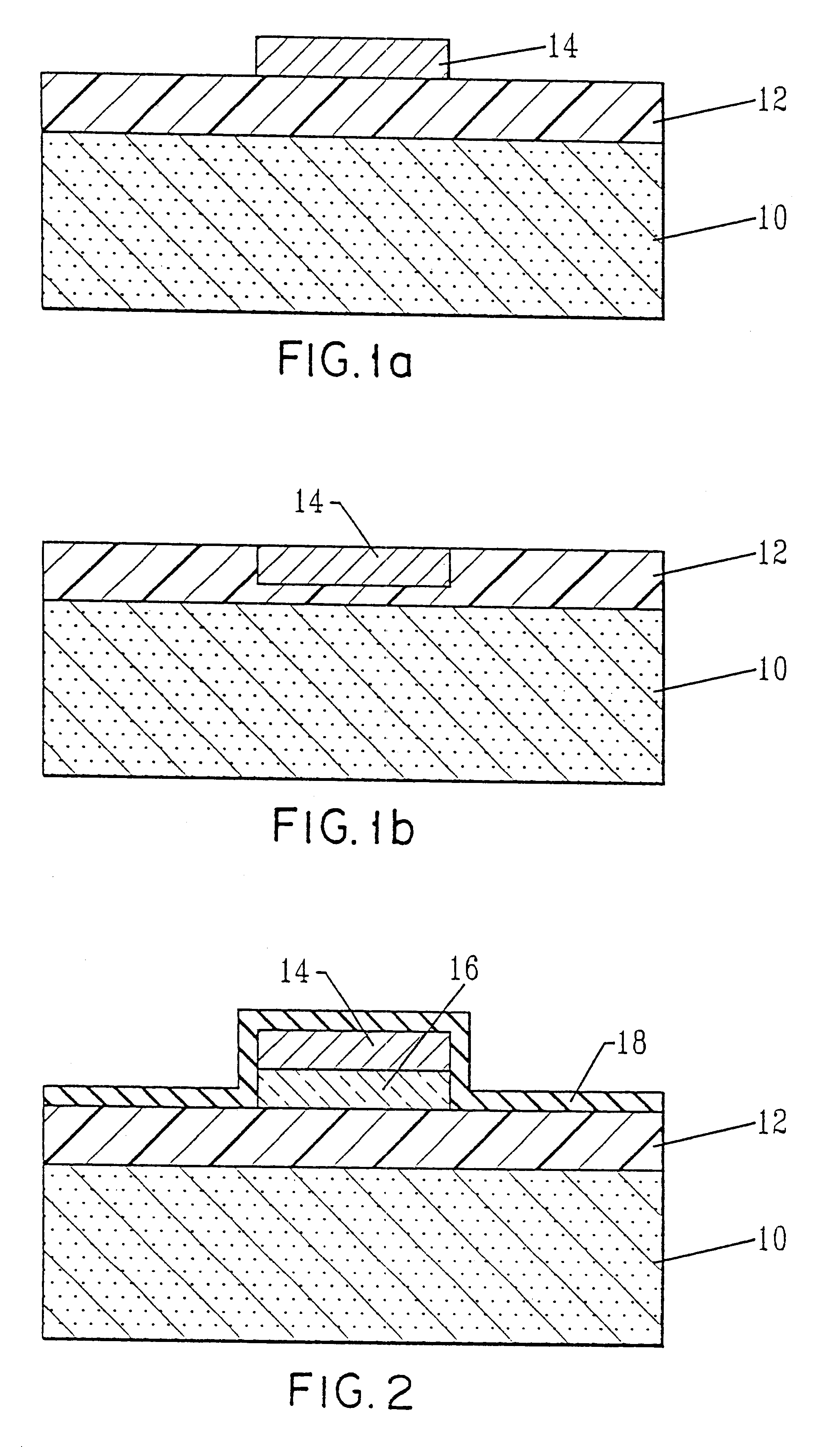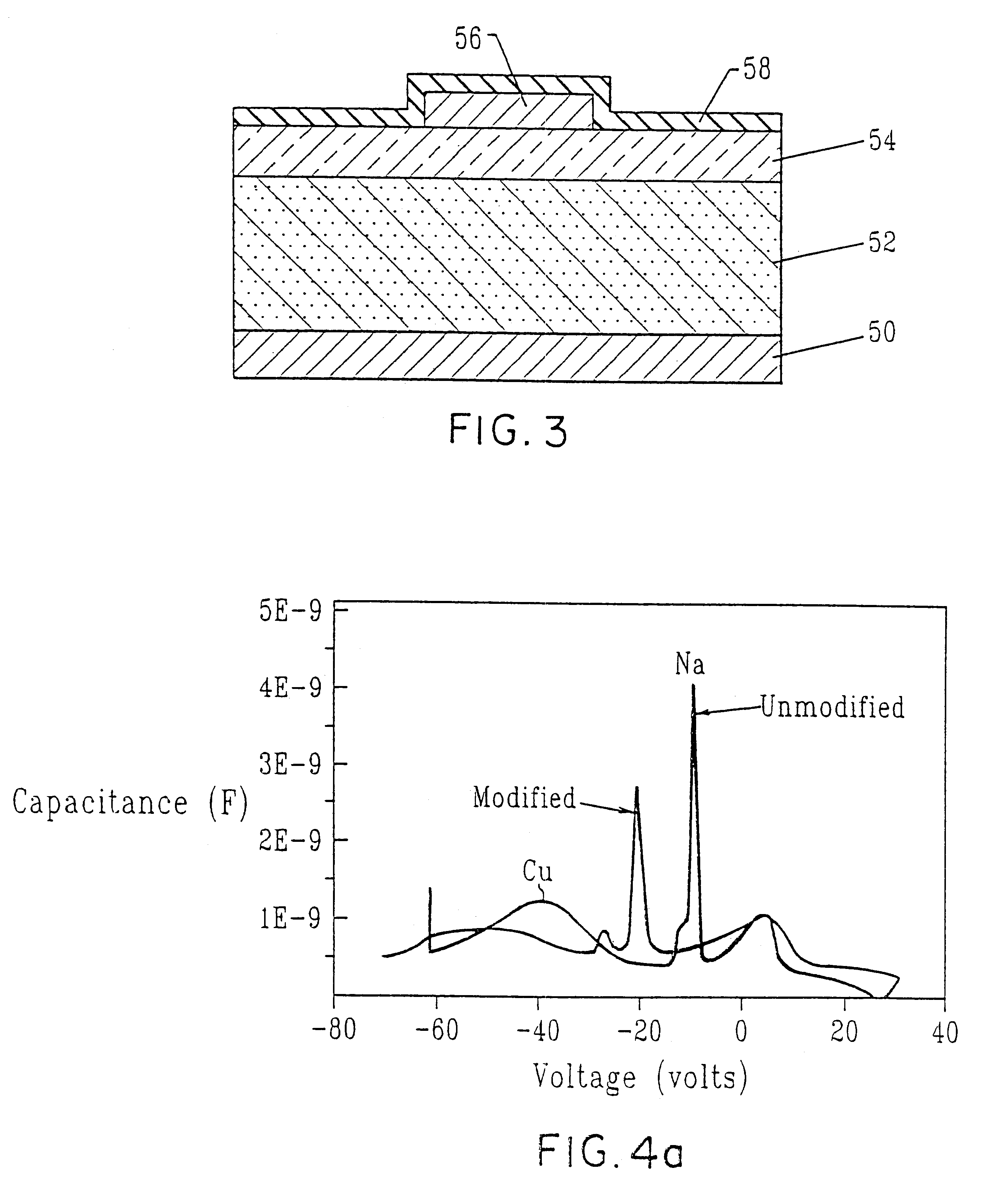Low k dielectric materials with inherent copper ion migration barrier
a technology of low k dielectric materials and migration barriers, which is applied in the direction of electrical apparatus, semiconductor devices, semiconductor/solid-state device details, etc., can solve the problems of reducing the overall dielectric constant reducing the performance of the chip, and increasing the overall dielectric constant performan
- Summary
- Abstract
- Description
- Claims
- Application Information
AI Technical Summary
Benefits of technology
Problems solved by technology
Method used
Image
Examples
Embodiment Construction
In this example, the following studies were performed on structures which contained the interlayer dielectric of the present invention, i.e. thermosetting polyarylene ether containing a phthalocyanine derivative, i.e. 2, 9, 16, 23-tetra-tert-butyl-29H, 31H phthalocyanine, as an additive, and comparison was made to structures that contained a conventional unmodified interlayer low k dielectric (thermosetting polyarylene ether without an additive).
Bias Thermal Stress (BTS) Test
BTS tests were used as an accelerated reliability test method for degradation of the above-mentioned interlayer dielectrics.
To measure the metallic ion migration through the abovementioned dielectric materials, a capacitor structure such as shown in FIG. 3 was employed. Specifically, the structure shown in FIG. 3 comprises a bottom W electrode 50, a Si substrate 52, an interlayer dielectric 54, Cu or Al electrode 56, and Si.sub.3 N.sub.4 layer 58.
In the test, a voltage of about 2 MV / cm was applied across the str...
PUM
| Property | Measurement | Unit |
|---|---|---|
| dielectric constant | aaaaa | aaaaa |
| thickness | aaaaa | aaaaa |
| thickness | aaaaa | aaaaa |
Abstract
Description
Claims
Application Information
 Login to View More
Login to View More - R&D
- Intellectual Property
- Life Sciences
- Materials
- Tech Scout
- Unparalleled Data Quality
- Higher Quality Content
- 60% Fewer Hallucinations
Browse by: Latest US Patents, China's latest patents, Technical Efficacy Thesaurus, Application Domain, Technology Topic, Popular Technical Reports.
© 2025 PatSnap. All rights reserved.Legal|Privacy policy|Modern Slavery Act Transparency Statement|Sitemap|About US| Contact US: help@patsnap.com



